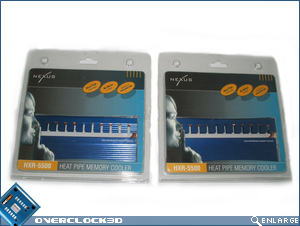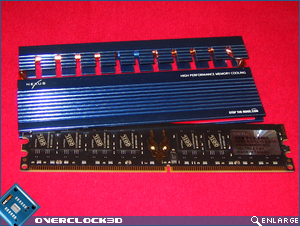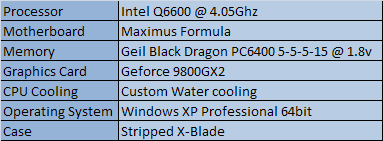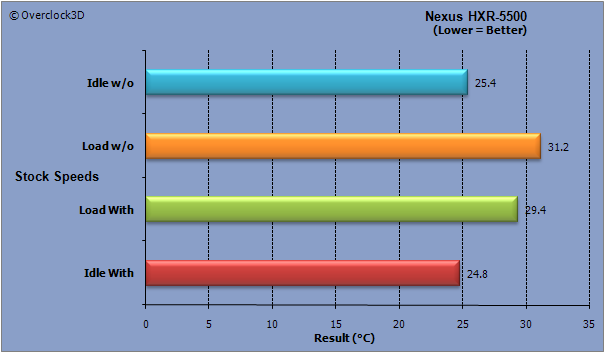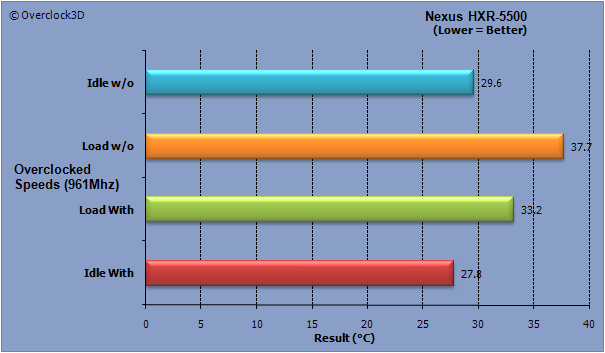Nexus Cooling Roundup
Nexus HXR-5500
Â
Â
The Nexus HXR-5500 come in boxes of one, as shown above. Three yellow ovals (similar to other packaging from Nexus products) display the main specifactions for the RAM sinks: “Heat Pipes”, “No Noise” and “Suitable for DRR/DDR2/DRR3”. At first glimpse, these heat sinks are of a very high quality build with no bad edges, well-finished aluminium and shiny copper heat pipes. You can tell these little beauties will make any RAM modules look ‘beefy’ and I am sure they move a fair amount of heat.
Â
Â
After closer inspection, the well-finished metal is even more obvious and in-fact quite impressive. Inside the heat spreaders you will find two strips of thermal pads, allowing for good heat transfer without risking the RAM chips themselves. Installation is as easy as it gets: simply unscrew two screws on the back of the spreaders, allowing you to slip your RAM modules into their new metal jacket. Then just screw the sinks up again to fastern the RAM in place, simple.
Time for some testing. For this test I am going to screw the RAM sinks to some Geil Black Dragon PC2-6400 5-5-5-15 RAM. I will then test with and without the sinks to see if there is a noticable difference; then I will overclock the modules and test again. I shall be using Orthos to stress the RAM, aiming to get them nice and toasty.Â
Â
Testing
Â
Below are specifications of the bench rig that will be used in the following tests.
Â
Â
Now let’s begin. I shall start by running at stock speeds of 800Mhz and record the idle and stressed temperatures of the chips with and without the sinks. All test were done in a room with an ambient temperature of 21.4oC.
Â
The Stock Clocks Results: Â
Â
Â
We can already see that the RAM sinks have lowered the temperatures of the modules. But it hasn’t made a huge impact, not life-threatening enough. So let’s have a look at the Overclock results and see if the Nexus HXR-5500 performs any better.Â
 Â
The Overclock Results
Â
Â
The outcome from the overclocking is a little more promising. Bear in mind that I am using the pads that come with the spreaders. If you were to apply a 3rd party thermal grease, you may get better but messier results. Finally, before you wonder, “Can these heat spreaders be used on a single sided module?,” they come with an extra cushion to comfort the side which hasn’t got memory on, while the other side gets cooled.
Â
On to the conclusion!



